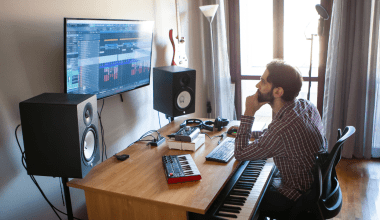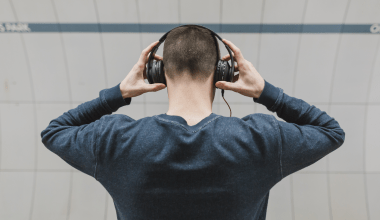If you’ve ever listened to music on Spotify, you might have wondered, does Spotify pay the artists whose songs you love? This question is becoming more common as streaming platforms grow in popularity, while artists’ earnings remain a hot topic in the music industry. To fully understand the answer, we need to explore how Spotify’s payment system works and how it impacts musicians, both big and small.
Let’s dive into this topic and break it down in simple terms. Whether you’re a curious music lover or an aspiring artist, this blog will cover everything you need to know about Spotify’s payment system.
How Does Spotify Make Money?
Before we get into artist payments, it’s important to understand how Spotify makes money. Spotify operates under two main revenue streams:
- Premium Subscriptions: Users pay a monthly fee for ad-free music, offline downloads, and other perks. This is one of Spotify’s primary sources of income.
- Ad Revenue: For free users, Spotify generates revenue through advertisements. These ads play between songs or appear on the app’s interface.
Spotify pools this income together to pay for its operations, royalties, and other business expenses. A portion of this revenue eventually goes to the artists, but the process isn’t as straightforward as it might seem.
How Does Spotify Pay Artists?
Spotify doesn’t pay artists directly. Instead, payments are distributed through intermediaries such as record labels, distributors, or music rights organizations. Here’s how the process generally works:
- Spotify Pays Rights Holders: Spotify allocates a portion of its revenue to rights holders. These include record labels, publishers, and distributors.
- Labels Pay Artists: If an artist is signed to a record label, the label takes its cut before paying the artist. Independent artists working with distributors like DistroKid or TuneCore receive payments directly from these services.
It’s crucial to note that the money artists receive depends on several factors, including their contract terms, the number of streams their music gets, and Spotify’s overall revenue.
How Much Does Spotify Pay Per Stream?
The short answer? It varies. Spotify doesn’t pay a fixed rate per stream. Instead, the amount depends on several factors:
- Location of the Listener: Streams from countries with higher subscription rates or ad revenue typically pay more.
- Subscription Type: Premium streams are worth more than streams from free users.
- Market Share: Payments are based on an artist’s share of total streams on the platform.
On average, Spotify pays between $0.003 to $0.005 per stream. This means an artist needs roughly 250 to 350 streams to earn one dollar. However, the actual amount an artist receives can be significantly less after intermediaries take their cut.
Why Are Artists Concerned About Spotify Payments?
Many artists and music industry professionals argue that Spotify’s payment model is unfair. Here’s why:
- Low Per-Stream Earnings: The average payout per stream is too low to sustain most artists, especially those without massive audiences.
- Uneven Distribution: Major artists and record labels often receive the lion’s share of payouts, leaving independent musicians with less.
- Opaque Calculations: The formula behind Spotify’s payouts is complex and lacks transparency, making it hard for artists to predict their earnings.
Can Artists Make a Living on Spotify?
For most artists, making a living solely from Spotify streams is challenging. Consider this example:
- An artist earning $0.004 per stream would need 250,000 streams to make $1,000.
- To earn the U.S. median annual salary of $50,000, they’d need over 12.5 million streams per year.
This reality underscores why many musicians use Spotify as just one part of their income strategy. Touring, merchandise sales, and licensing deals are often more lucrative.
Are There Any Advantages for Artists on Spotify?
Despite the challenges, Spotify does offer some benefits for artists:
- Global Reach: With over 500 million users, Spotify provides an unparalleled platform for artists to reach a global audience.
- Data Insights: Spotify for Artists offers analytics, helping musicians understand their audience and strategize their marketing efforts.
- Playlist Exposure: Getting featured on popular playlists can lead to a significant increase in streams and visibility.
How Can Artists Maximize Their Earnings on Spotify?
Here are some strategies musicians can use to boost their Spotify revenue:
- Optimize Profiles: Ensure your artist profile is complete with bio, photos, and links to social media or merchandise.
- Promote Your Music: Actively share your Spotify link on social media, websites, and email newsletters.
- Focus on Playlists: Pitch your music to playlist curators or create your own playlists to gain more exposure.
- Release Regularly: Frequent releases keep your audience engaged and can lead to more streams over time.
What Is Spotify Doing to Address Artist Concerns?
Spotify has taken steps to improve its relationship with artists, such as:
- Launching tools like Spotify for Artists to provide transparency and control.
- Offering direct uploads (though this feature is currently limited).
- Partnering with platforms like Bandcamp to support musicians.
However, critics argue that these efforts don’t address the core issue of low payouts.
Conclusion
So, does Spotify pay the artists? Yes, but the payments are often lower than many would expect. While Spotify has revolutionized how we consume music, its payment model presents significant challenges for musicians trying to earn a living. For artists, Spotify is best seen as a tool for exposure rather than a primary income source.
For further reading, explore these related articles:
- How to Make Your Own Music Video: A Step-by-Step Guide
- Best Music Software for Beginners: Your Gateway to Music Creation
For additional resources on music marketing and distribution, visit DMT Records Private Limited.






